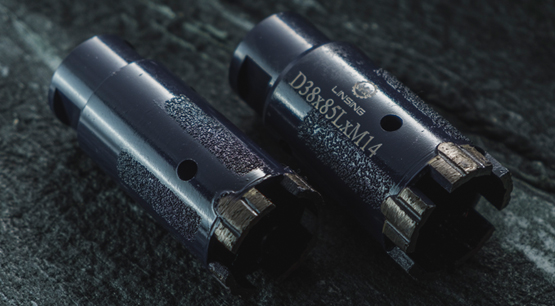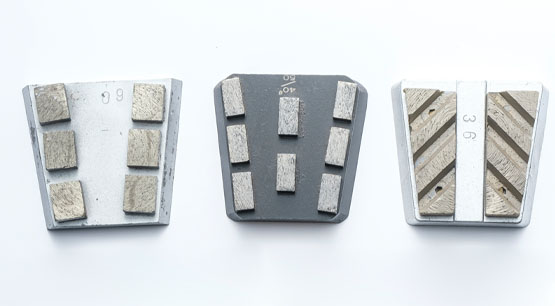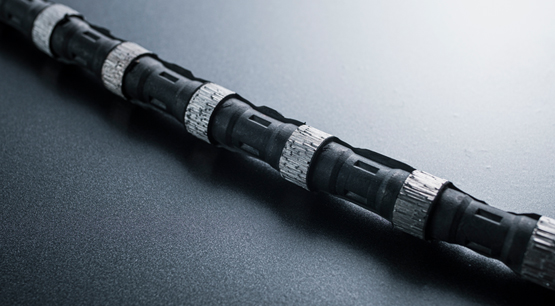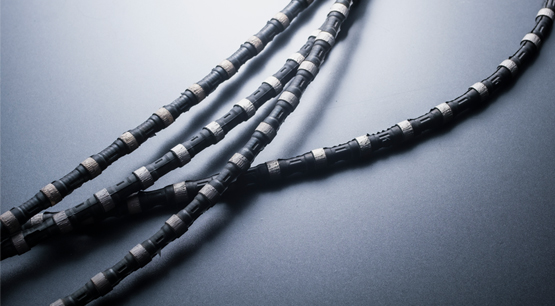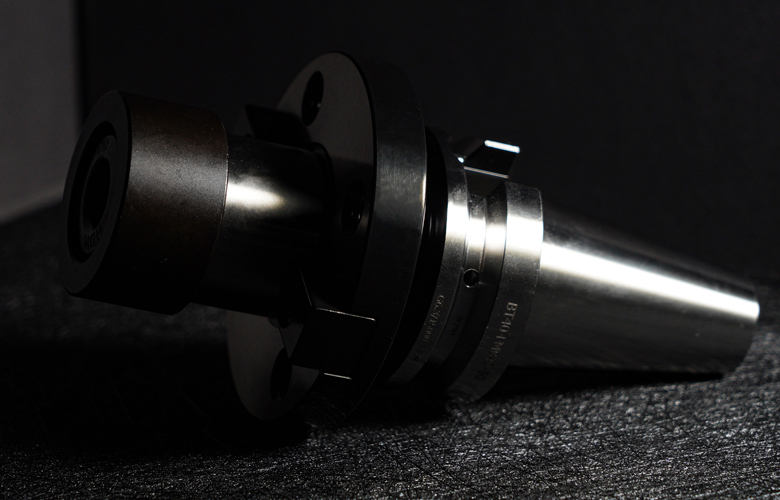The manufacturing of diamond wire saws is a complex process that involves several stages and specialized equipment. These tools ensure that the final product meets the high standards required for cutting hard materials such as granite and marble. This article will provide a comprehensive overview of the equipment used in each stage of the manufacturing process.
I. Overview of Diamond Wire Saw Manufacturing
The production process for diamond wire saws can be divided into the following main stages:
- Wire Rope Preparation
- Diamond Bead Production
- Assembly of Beads on Wire Rope
- Bonding and Sintering
- Final Assembly and Quality Control
Each stage utilizes specific equipment designed to handle the materials and processes necessary for creating a high-quality diamond wire saw.
II. Wire Rope Preparation
1. Wire Drawing Machine
The wire drawing machine is essential for producing high-tensile steel wire ropes from raw steel. The process involves pulling steel through a series of dies to reduce its diameter and increase its strength.
- Operation: The machine draws the steel through multiple dies, gradually reducing its diameter while enhancing its tensile strength.
- Importance: Ensures that the wire rope has the required strength and flexibility to endure the stresses of cutting hard materials.
2. Annealing Furnace
An annealing furnace is used to heat-treat the steel wire rope to relieve internal stresses and improve its ductility and toughness.
- Operation: The wire rope is heated to a specific temperature and then slowly cooled to achieve the desired mechanical properties.
- Importance: Enhances the durability and flexibility of the wire rope, preventing breakage during operation.
III. Diamond Bead Production
1. Powder Mixing Machine
The powder mixing machine blends diamond powders with metal powders to create the raw material for diamond beads. This mixture ensures that the diamond particles are evenly distributed within the metal matrix.
- Operation: The machine uses mechanical or ultrasonic agitation to achieve a homogeneous mixture.
- Importance: Ensures consistent quality and performance of the diamond beads by achieving a uniform distribution of diamond particles.
2. Cold Pressing Machine
The cold pressing machine shapes the mixed powders into green (unfired) diamond beads. This machine applies pressure to compact the powder mixture into a solid form.
- Operation: The mixture is placed in a mold, and high pressure is applied to form compact beads.
- Importance: Produces beads with the correct shape and density, which are crucial for the subsequent sintering process.
3. Sintering Furnace
The sintering furnace is used to consolidate the green beads by heating them to a temperature below the melting point of the main constituent of the mixture. This process bonds the diamond particles and metal matrix together, forming a solid and durable bead.
- Operation: The green beads are heated in a controlled atmosphere to facilitate the bonding process without melting the entire bead.
- Importance: Creates strong and wear-resistant diamond beads essential for the cutting efficiency and longevity of the wire saw.
IV. Assembly of Beads on Wire Rope
1. Bead Stringing Machine
The bead stringing machine assembles the diamond beads onto the prepared wire rope. This machine ensures that the beads are evenly spaced and securely attached to the wire.
- Operation: The beads are threaded onto the wire rope, often with spacers placed between them to maintain uniform spacing.
- Importance: Ensures that the diamond beads are correctly positioned for optimal cutting performance.
2. Spacer Insertion Machine
The spacer insertion machine places spacers between the diamond beads on the wire rope. These spacers help to maintain even spacing and reduce friction between the beads during cutting.
- Operation: The machine precisely inserts spacers between the beads along the length of the wire rope.
- Importance: Maintains consistent spacing and alignment of the beads, which is critical for uniform cutting performance.
V. Bonding and Sintering
1. Brazing Machine
The brazing machine bonds the diamond beads to the wire rope using a filler metal. This process ensures that the beads are securely attached and can withstand the stresses of cutting operations.
- Operation: The machine applies heat and filler metal to bond the beads to the wire rope.
- Importance: Provides a strong and durable bond between the beads and the wire rope, essential for the longevity and effectiveness of the wire saw.
2. Induction Heating Machine
An induction heating machine is sometimes used for brazing or further heat-treating the wire and beads to enhance their bond and strength.
- Operation: The machine uses electromagnetic induction to heat the wire and beads, ensuring an even and controlled temperature application.
- Importance: Enhances the quality and consistency of the bonding process, improving the overall performance of the diamond wire saw.
VI. Final Assembly and Quality Control
1. Tensioning Machine
The tensioning machine ensures that the diamond wire saw is correctly tensioned before it is used. Proper tensioning is crucial for the performance and safety of the saw.
- Operation: The machine applies tension to the wire, checking for proper alignment and stress distribution.
- Importance: Ensures that the wire saw operates correctly and safely, reducing the risk of breakage during use.
2. Quality Inspection Machine
Quality inspection machines are used to check the final product for defects and ensure that it meets the required standards. These machines may use various techniques, including visual inspection, mechanical testing, and ultrasonic testing.
- Operation: The wire saw is subjected to a series of tests to check for defects, alignment, and overall quality.
- Importance: Ensures that only high-quality diamond wire saws are shipped to customers, maintaining the manufacturer's reputation and customer satisfaction.
3. Packaging Machine
The packaging machine prepares the finished diamond wire saws for shipment. This machine ensures that the saws are securely packed to prevent damage during transportation.
- Operation: The machine wraps and packages the wire saws, often including protective materials to cushion the product.
- Importance: Protects the diamond wire saws during transit, ensuring they arrive in perfect condition for use.
VII. Conclusion
The production of diamond wire saws involves a complex series of stages, each requiring specialized equipment. From wire drawing and annealing to bead production, assembly, bonding, and final quality control, each step is crucial to ensuring the final product's performance, durability, and reliability.
Investing in high-quality equipment for manufacturing diamond wire saws is essential for producing a product that meets the rigorous demands of cutting hard materials. By understanding the roles and importance of each piece of equipment, manufacturers can ensure that their diamond wire saws offer the precision, efficiency, and longevity required by their customers.




